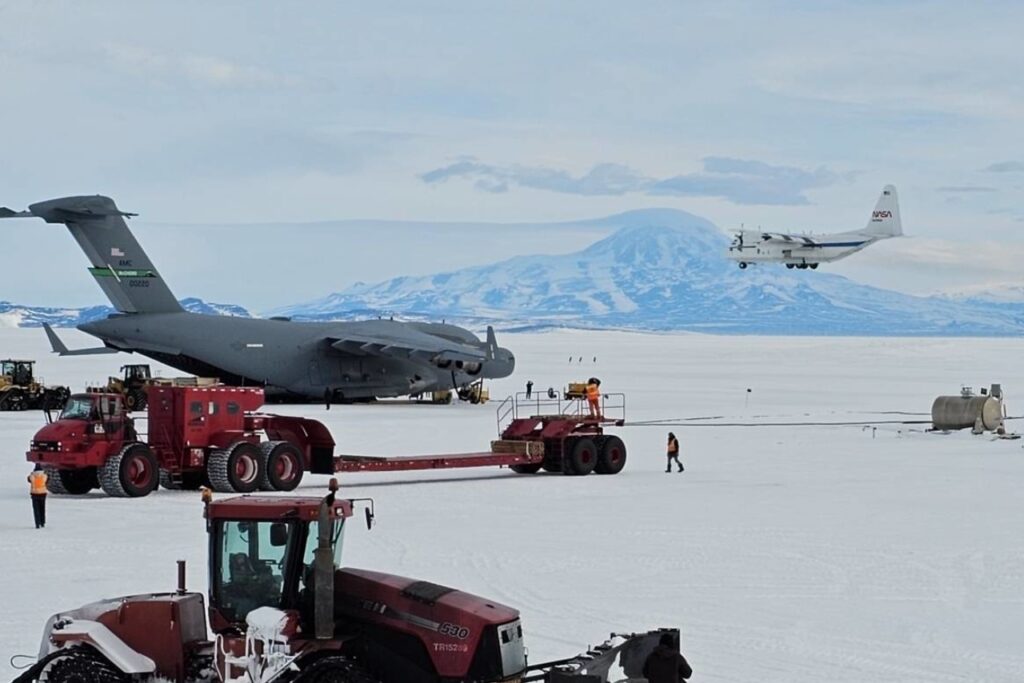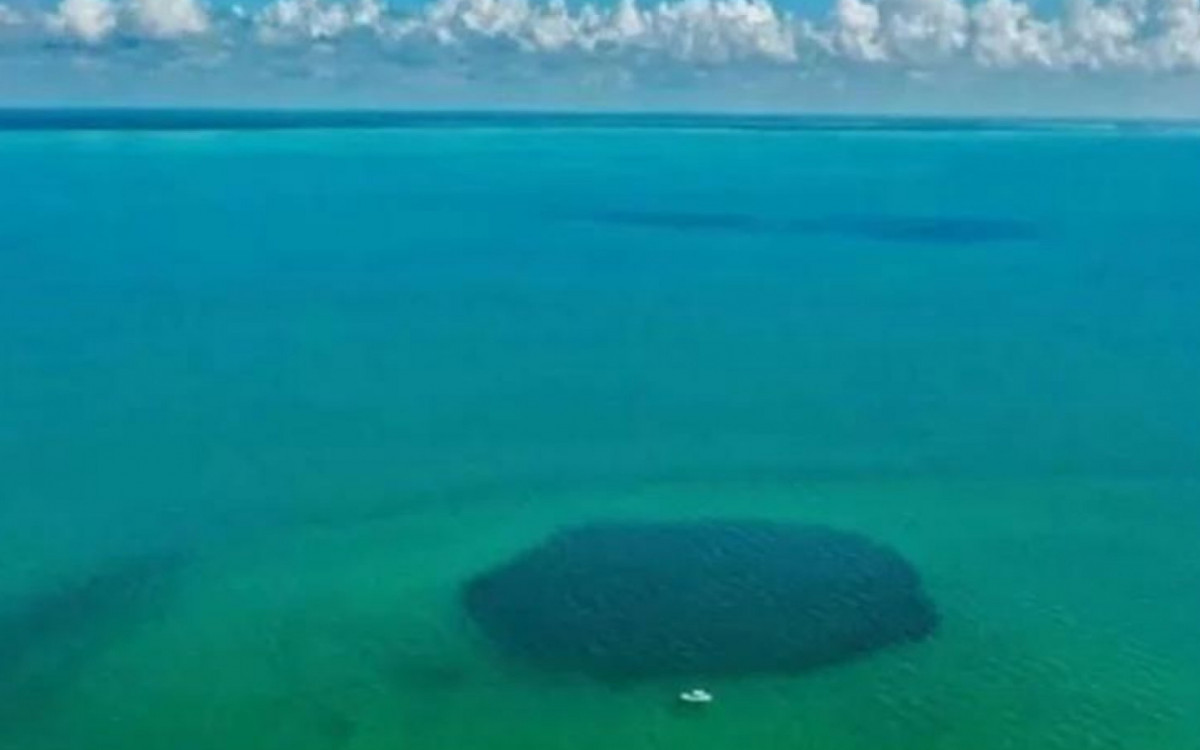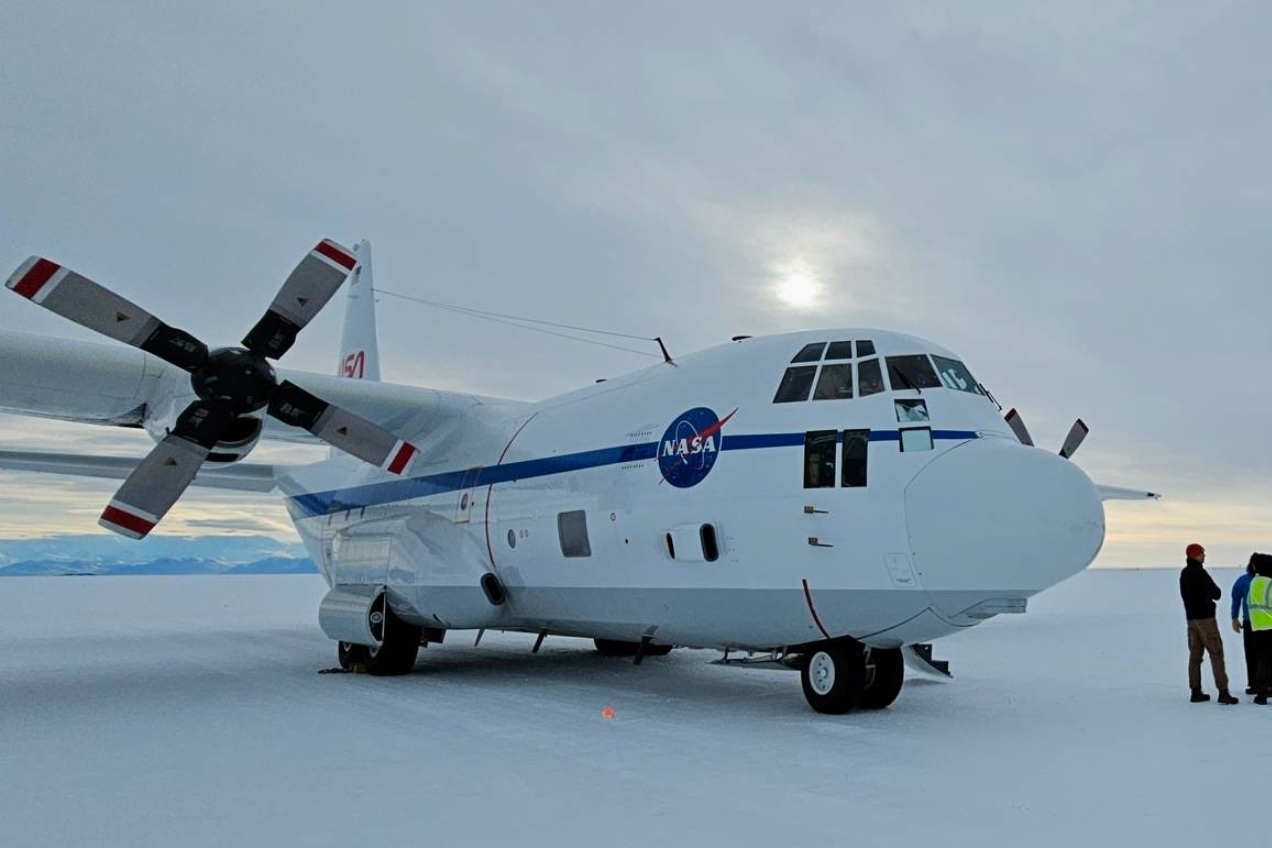The United States National Aeronautics and Space Administration, known by its initials – NASA, today reported that last Saturday, October 28, 2023, its C-130 Hercules aircraft and its crew landed safely at McMurdo Station, in Antarctica, after a circumnavigation. Globe for special delivery: Galactic/Extragalactic Terahertz Spectroscopic Observatory ULDB, or GUSTO, for its abbreviation in English.
United States Research Station, operated by the US National Science Foundation (National Science Foundation) hosts NASA’s Long-Term Balloon Expedition in Antarctica, where the GUSTO mission will perform a science balloon flight starting in December 2023.
The C-130 crew for the 26,400 nautical mile (48,892 km) round-trip flight made its first stop at Fort Cavazos, Texas, on October 17, to load the Gusteau Observatory and members of its research team.
Additional stops for aircraft maintenance and crew rest included Travis Air Force Base (AFB), California; Hickman Air Force Base, Hawaii; Pago Pago, in American Samoa; and Christchurch, New Zealand, before finally reaching McMurdo, Antarctica – just 1,300 kilometers from the South Pole.


Gusteau, part of NASA’s Astrophysical Explorers Program, is scheduled to fly aboard a zero-pressure science balloon the size of a football field for 55 days or more on a mission to map part of the Milky Way and the nearby Large Magellanic Cloud.
A telescope equipped with detectors for carbon, oxygen and nitrogen emission lines will measure the interstellar medium, which is the cosmic material found between the stars, and track the complete life cycle of this material.
GUSTO’s scientific observations will be carried out by balloon launch from Antarctica to allow sufficient observation time in the air, access to astronomical objects and solar energy provided by the southern polar summer.
Wallops Aviation Facility’s Aircraft Office (Wallops Aviation Facility’s Aircraft Office) NASA’s Wallops Island, Virginia, facility, which operates the C-130, spent nearly a year in coordination efforts to prepare for GUSTO’s flight to its launch site.
From international agencies with agencies and shipping configurations with the Balloon Program Office (Balloon Program Office) from NASA, logistical support with National Science Foundation In McMurdo, to specialized training in unconventional navigation systems in Antarctica Aircraft office Developed an extensive plan to safely deliver the complex scientific payload.
The first mission to Antarctica for NASA’s C-130 presented many challenges of long-distance cargo flight. Mission managers and NASA’s Office of International and Interagency Relations (OIIR) started early to stay ahead of the curve in coordinating international flight authorizations.
“We are working hard to ensure that the mission is carried out with a high level of technical competence and professionalism to maintain NASA’s international reputation.”said John Baycora, Wallops research pilot for the Gusto mission.
Significant changes in time zone challenge the crew’s circadian rhythm. Ninety hours of flying across multiple time zones requires an additional pilot and flight engineer on the mission to share the workload. Mandatory crew rest days at strategic locations, per NASA policy, ensure that the crew has adequate time to rest, adjust to the schedule, and proceed safely.
Unpredictable weather also ranks high on the list of the most pressing challenges for this type of travel. Ocean crossings present the additional risk of complex weather conditions due to the lack of radar coverage over the ocean. The crew uses Department of Defense and civilian meteorological agencies to identify dangerous weather conditions and adjust flight paths, altitude and times accordingly.
“For the specific case of McMurdo, while travelling, we contacted the Met Office at McMurdo Station for a forecast update before we reached the ‘safe return’ point. Using a conservative approach, we decided whether to continue on to McMurdo Station or return to Christchurch and try again.” the next day.Baykora said.
For this mission, no commercial entity supported the final leg to Antarctica. USAF C-17s and New York Air National Guard LC-130s, which normally fly to McMurdo Station, had limited space in their schedules.
“By utilizing a NASA C-130 aircraft for this specialized cargo mission, the balloon program gained a dedicated resource with a highly experienced crew and support staff. This significantly reduced standard project risks in terms of schedule, load and cost.”Baykora said.

“Music fanatic. Professional problem solver. Reader. Award-winning tv ninja.”


:strip_icc()/i.s3.glbimg.com/v1/AUTH_bc8228b6673f488aa253bbcb03c80ec5/internal_photos/bs/2024/E/Y/jTNpqjQAe6HJkNWs8bHg/whatsapp-image-2024-05-01-at-19.51.21.jpeg)




More Stories
UK begins detaining migrants to be deported to Rwanda
The “curved man” regains his movement after 28 years of spinal curvature
Human extinction has a date that scientists have already predicted